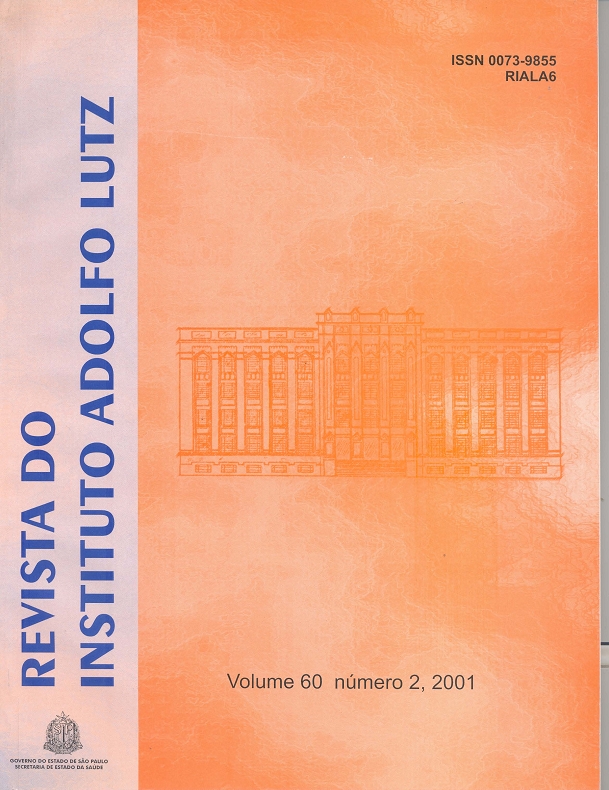Resumo
Um considerável número de espécies arbóreas constitui a flora brasileira, em alguns casos, seus frutos revelam-se boas fontes de nutrientes. Objetivando contribuir nessa área, foi determinada a composição química da semente e do óleo de baru (Dipteryx alata Vog.), nativo do Município de Pirenópolis, Estado de Goiás. A metodologia analítica para a determinação da composição centesimal aproximada da semente e em ácidos graxos de seu óleo seguiu o descrito nas ‘’Normas Analíticas do Instituto Adolfo Lutz’’ (1985), o método enzimático-gravimétrico de Lee para as fibras totais, e a técnica da Espectrometria de Emissão Atômica com Plasma de Argônio Indutivamente Acoplado (ICPAES) para os minerais. A semente de baru apresentou teores relativamente elevados de lipídios (38,2 g/ 100 g) e proteínas (23,9 g/100 g) e, conseqüentemente, de calorias (502 kcal/100 g), além de valores significativos de fibras alimentares (13,4 g/100 g) e de minerais, como potássio (827 mg/10 g), fósforo (358 mg/100 g) e magnésio (178 mg/100 g), sugerindo seu emprego na alimentação humana e animal, desde que não contenha substâncias tóxicas ou alergênicas. O óleo da semente revelou um elevado grau de insaturação (81,2%), conteúdo de α-tocoferol (5,0 mg/100 g) e composição em ácidos graxos semelhantes a do óleo de amendoim, destacando-se os ácidos oléicos (50,4%) e linoléico (28,0%), este considerado essencial, o que favorece seu uso para fins alimentícios e como matéria-prima para as indústrias farmacêutica e oleoquímica.
Referências
2. Association of Official Analytical Chemists. Official methods of analysis of the Association of Official Analytical Chemists. 15th ed. Washington, D.C., A.O.A.C., 1995 (method 985.01).
3. Brasil. Leis, decretos, etc. Resolução Nº 482, de 23 de setembro de 1999, da Agência Nacional de Vigilância Sanitária do Ministério da Saúde. Aprova o Regulamento Técnico referente a Óleos e Gorduras Vegetais. Diário Oficial, Brasília, 13 out. 1999, Seção I, p. 82-87 (Anexo 3 – Óleo de amendoim).
4. De Angelis, R.C. Fisiologia da nutrição – fundamentos para nutrição e para desnutrição. São Paulo, EDART, 1977. v. 1, p.320.
5. Ferreira, F.A.G.; Graça, M.E. da S. Tabela da composição dos alimentos portugueses. Lisboa, Instituto Superior de Higiene Dr. Ricardo Jorge, 2ª ed., 1983. p.7.
6. Freire, R.M.M.; dos Santos, R.C.; Beltrão, N.E. de M. Qualidade nutricional e industrial de algumas oleaginosas herbáceas cultivadas no Brasil. Óleos & Grãos, 5(28):49-53, 1996.
7. Freitas, S.M. de Girassol, um mercado em expansão. Óleos & Grãos, 10(55):30-34, 2000.
8. Instituto Adolfo Lutz. Normas analíticas do Instituto Adolfo Lutz. São Paulo, IMESP, 3ª ed., 1985. p. 533, v. 1: métodos químicos e físicos para análise de alimentos.
9. Lee, S.C.; Prosky, L.; Devries, J.W. Determination of total, soluble and insoluble dietary fiber in foods. Enzimatic-gravimetric method, MÊS-TRI Buffer: colaborative study. JAOAC Int., 75:395-416, 1992.
10. Lorenzi, H. Árvores brasileiras: manual de identificação e cultivo de plantas arbóreas nativas do Brasil. Plantarum, Nova Odessa, 1992. p. 202.
11. Melheim, T.A. Fisiologia do desenvolvimento de Dipteryx alata Vog. – Contribuição ao seu estudo. São Paulo, Instituto de Biociências da Universidade de São Paulo, 1972, 215 p. [Tese de Doutoramento].
12. Pio Corrêa, M. Dicionário das plantas úteis do Brasil. Rio de Janeiro, 1984. 707 p. v. 2.
13. Popinigis, F. Fisiologia da semente. Brasília, Agiplan, 2ª ed., 1985. 289 p.
14. Rizzini, C.T.; Wors, W.B. Botânica econômica brasileira. São Paulo, EPUSP, 1976. 207 p.
15. Togashi, M.; Sgarbieri, V. C. Avaliação nutricional e da proteína e do óleo de semente de baru (Dipteryx alata Vog.). Ciênc. Tecnol. Aliment., 15(1):66-69, jan.-jun. 1995.
16. Vallilo, M.I. et al. Lecythis pisonis Camb. nuts: oil characterization, fatty acids and minerals. Food Chem., 66:197-200, 1999.
17. Vallilo, M.I.; Tavares, M.; Aued, S. Composição química da polpa e da semente do fruto do cumbaru (Dipteryx alata Vog.) – caracterização do óleo da semente. Rev. Inst. Flor., São Paulo, 2(2): 115-125, 1990.

Este trabalho está licenciado sob uma licença Creative Commons Attribution 4.0 International License.
Copyright (c) 2001 Emy Takemoto, Isaura A. Okada, Maria Lima Garbelotti, Mário Tavares, Sabria Aued-Pimentel
